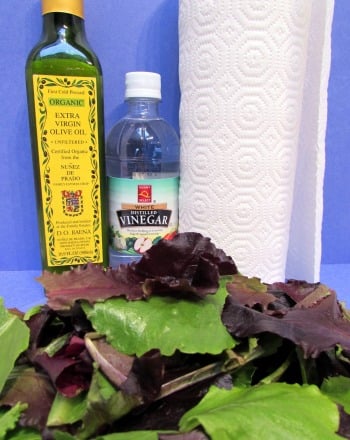Science project
Ew... Brown Guacamole!
Difficulty of Project
Easy
Cost
$8.00 for avocados, light bulb, and posterboard
Safety Issues
Adult supervision may be needed when handling the glass light bulb.
Approximate time to complete the project
One week
Objective
The project is about exploring the browning of guacamole. Students will determine the truth about the old myth that avocado pits contain a mysterious “something”. They will compare mashed avocado left in contact with the pit, to mashed avocado from which the pit was removed. In a second experiment, they will try to replicate the effect of the pit by putting a light bulb into the mashed avocado instead of the pit. Lastly, in an third experiment, they will explore the effect of ascorbic acid on the browning process.
Project Goal
The goal is for young children to examine browning of fruits and vegetables.
Materials/ Ingredients
- Bowl for mashing avocado
- 2 avocados
- Fork (or other mashing implement)
- Light bulb (not fluorescent)
- Plastic containers to put mashed avocado in (soup bowls or anything with a mouth that is at least 5 inches across will work)
- Knife (for cutting avocado)
- Lime juice
- Spoon (for scooping out the contents of the avocado)
Introduction
Background information
Guacamole is a tasty Mexican treat, but like many things made from fresh fruit or vegetables, it turns from green to brown very quickly. Many cookbooks state that leaving the avocado pit in the guacamole will minimize browning. Students will have the opportunity to test the truth of this practice.
Browning is caused by a class of enzymes called polyphenol oxidases. These enzymes act upon phenolic compounds found in almost all fruits and vegetables. Unfortunately, the claim that the avocado pit can prevent browning is false. Polyphenol oxidases require oxygen so covering the mashed avocado (with either a pit, a light bulb or plastic wrap) will prevent browning. Enzymes can be deactivated temporarily by exposing them to ascorbic acid (vitamin C). Unfortunately, this effect is only temporary because the enzymes have the power to act upon thousands of phenolic compounds.
Research Questions
- What makes guacamole turn brown?
- Does leaving the avocado pit in the guacamole prevent browning? Can the effect of the pit be replicated in other ways?
- What effect does oxygen have on browning?
- Can vitamin C prevent browning?
Terms, Concepts and Questions to Start Background Research
- Browning
- Enzymatic action
- Polyphenol oxidase
Experimental Procedure
Experiment #1
- Cut an avocado in half.
- Put the avocado in a bowl. Remove the pit. Scoop out the inside of the avocado and distribute in two containers. Put the pit in one of the containers (the other container is your control). Put the two containers in a place where they will be undisturbed for three hours.
- After three hours, compare the two containers of mashed avocado. Do they look different? Remove the pit from the bowl. Inspect the avocado that was underneath the pit. Is the avocado under the pit green or brown? Write up what you observed. Take pictures of it!
Experiment #2
- Cut an avocado in half.
- Put the avocado in a bowl. Remove the pit. Scoop out the inside of the avocado and distribute in two containers. Put a light bulb into one of the containers of mashed avocado. You can use the screw-in end of the light bulb as a handle. Put the pit into the other container of mashed avocado. Put the two containers in a place where they will be undisturbed for three hours. Perfectly transparent light bulbs are great for this because you can see through the glass.
- After three hours, compare the two containers of mashed avocado. Do they look different? Remove the light bulb and the pit from the bowls. Is the avocado under the light bulb green or brown? How does it compare to the avocado under the pit? Write up what you observed. Take pictures of it. Which areas were exposed to the air? Which areas are green and which are brown?
Experiment #3
- Cut an avocado in half.
- Put the avocado in a bowl. Remove the pit. Scoop out the inside of the avocado and distribute in two containers. Add a tablespoon of fresh lime juice to one container. Put the two containers in a place where they will be undisturbed for 1.5 hours.
- Compare the two bowls of mashed avocado. Do they look different? Compare the two bowls again at 2.0 hours, 2.5 hours and 3.0 hours. Take pictures! Write up your results.
Bibliography
- The Curious Cook by Harold McGee
- Wikibooks Cookbooks: "Guacamole"
- "The Retardation of Enzymatic Browning In Avocado Puree and Guacamole" By R.P. Bates
Education.com provides the Science Fair Project Ideas for informational purposes only. Education.com does not make any guarantee or representation regarding the Science Fair Project Ideas and is not responsible or liable for any loss or damage, directly or indirectly, caused by your use of such information. By accessing the Science Fair Project Ideas, you waive and renounce any claims against Education.com that arise thereof. In addition, your access to Education.com's website and Science Fair Project Ideas is covered by Education.com's Privacy Policy and site Terms of Use, which include limitations on Education.com's liability.
Warning is hereby given that not all Project Ideas are appropriate for all individuals or in all circumstances. Implementation of any Science Project Idea should be undertaken only in appropriate settings and with appropriate parental or other supervision. Reading and following the safety precautions of all materials used in a project is the sole responsibility of each individual. For further information, consult your state's handbook of Science Safety.













